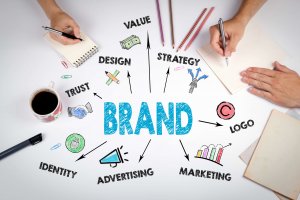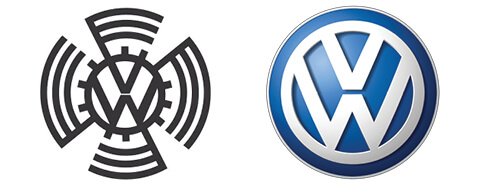Building a brand starts early. As soon as the ball starts rolling with your business idea, it’s time to think about branding. Branding is more than choosing a logo and fancy font ‒ this is the face you present to the world.
Bear in mind, a lot of companies start out vastly different to their end product. Fun fact: Nintendo tried its hand at playing cards, taxis, hotels and TV, before eventually landing on video games.
While your objectives and scope may change along the way, your branding is your ideology. It gives you the framework and confidence to always put your best foot forward. With effective branding, future growth can sprawl in concentric circles around a central ethos.
So, where to start?
Know your audience
Being an expert in your product is no guarantee of knowing your audience. When you know who you’re speaking to, you’re much better equipped to know what to say. Simple as that.
Assess your target demographics, gauge their search intent, and tailor your communication accordingly. Find the happy medium between what your audience needs and what feels natural for your brand.
Research tools such as Buzzsumo, Answerthepublic, and Google Trends / Analytics are a good place to start. You can also gauge sentiment by trawling through discussions on platforms like Reddit and Quora.
Lay out brand guidelines
Find the look, feel, and tone of your business. Firstly, get together with your team for a brainstorming session to align on values. Write it all down. This can be distilled into a brief for designers to nail the aesthetic, and content teams can draft up the tone of voice. It’s okay for buzzwords to get thrown around at this point, but don’t let them bleed over too much into your day-to-day communication. Customers want clear, compassionate interaction, not platitudes.
Basically, brand guidelines are for internal use, new hires, and any agencies you partner with, providing a template for consistent communication.

In terms of visual branding, here are some great examples of what that might look like, courtesy of Hubspot. Many have tried to DIY this part and many have failed. If you have access to a professional designer, let them do their thing.
As for tone of voice (TOV), your guidelines should feature multiple clear examples, not just a vague word cloud. Someone reading through the document for the first time shouldn’t have to guess what ‘forward-thinking synergy’ means. If you want to make it fun, you can personify your TOV. Who are they? What are they eating? What music are they listening to? What’s their sneeze etiquette (preferably not into the hand then borrowing your favourite pen)?
If you’re struggling for ideas, you can try the Goldilocks approach ‒ mock up a hypothetical interaction through a lens of too hot, too cold, and just right. This sets clear parameters, removing any ambiguity.
One size doesn’t necessarily fit all
By all means draw inspiration from brands you love, but avoid the trap of copying brand guidelines verbatim. For starters, you don’t make friends with plagiarism. More to the point, imitating another brand’s approach tends to come across as inauthentic. Take what you love from other sources and apply your own identity to it.
Naturally, some brands demand a more serious tone than others. Whether you’re formal or irreverent, you should sound like a living, breathing, caring human. That applies to businesses of all sizes.
A quick reminder that parity is not a strategy. While some brands base their entire model on being a competitor, you should have your own identity and USP (unique selling proposition). Even if your product or service isn’t unique on its own, maybe your story is. What makes you you? People buy products but increasingly, they buy into a cause.
Changing tack is okay
More than okay, in fact. In many cases, it’s necessary for survival. While consistency is important, so too is the agility to move with the times. As technology and society advances, so too do the needs of customers. It’s instructive to look at early iterations branding attempts of some well-known companies. Not all ideas ‒ even the ones that get approved ‒ are a home run at first. And some age better (or worse, as in Volkswagen’s case) than others.

Eesh…the less said about Volkswagen’s 1939 logo, the better

Apple through the ages
There’s no shame in rebranding. It’s important to move with the times. You see the same with enduring music artists ‒ think Madonna, Beyonce, Prince. It’s Darwinism, essentially. They adapt and reinvent themselves to stay relevant.
Don’t force it
As the old adage goes: show, don’t tell. People don’t need constant lecturing on your values. If you embody them in everything you do, they’ll be apparent. You don’t lay out your values, aesthetic and TOV so you can recite them incessantly to passersby. They’re there to inform your actions and communications.
Effective branding feels natural. It lets customers, employees and stakeholders know what you’re about in an instant. Done well, branding invites people in.
At its core, branding gives a business direction and clarity. It also enables new personnel to maintain consistency regardless of turnover. Branding is the face you present to your audience, which makes it so crucial to build a lasting connection ‒ and ultimately boost conversions.
Only when people gain a strong sense of self can they reach their potential. The same goes for businesses. Take the time to think about your own branding and whether it represents who you are and what you want to be.


